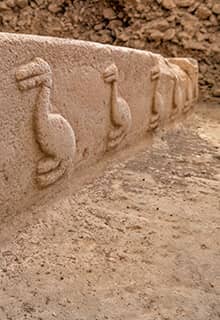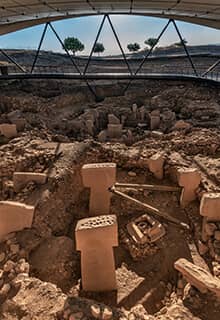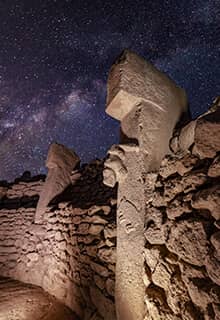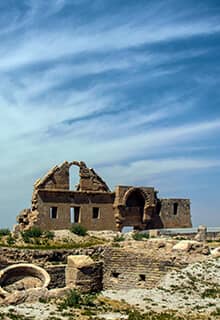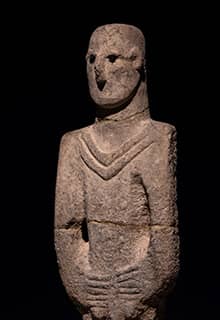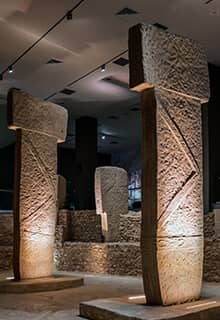

Dawn of Humankind
Şanlıurfa – Harran – Göbeklitepe – Karahantepe – Nevali Çori
With a history of 12,000 years, Şanlıurfa, believed by some to be the ancient city of Ur Kaśdim (Ur of the Chaldeans), proudly exhibits the legacy of all the civilizations that have prospered in the region.
The neolithic settlements of Nevali Çori and the mounds of Lidar Höyük, Gre Virike, and Hessek Höyük are proof of the earliest inhabitants of the region dating back to 8500 BC.
Şanlıurfa is regarded as a holy site by Jews, Christians, and Muslims alike. According to the Old Testament, the Prophet Abraham (Ibrahim), the "father of the three monotheistic religions," was born in the city of Ur Kaśdim and, together with his family, he migrated to Harran, the "home of patriarchs."
In the second millennium BC, the lands of Şanlıurfa were home to a city of a Hurrite state. Some believe that Abraham was born in a cave near a place where the Mevlid Halil Mosque stands now. The site and the cave itself are regarded as sacred.
Göbeklitepe
Before the great monotheistic religions, before the Greek gods, before ancient Egypt, before the Hittites, there was one place in the world that was the earliest known sacred site: the world’s earliest known temple complex and pilgrimage site is Göbeklitepe in Türkiye.
Göbeklitepe is located on the edge of the Fertile Crescent of Upper Mesopotamia, 12 km northeast of Şanlıurfa in the Tek Mountains. Massive carved stones about 11,000 years old, crafted and arranged by prehistoric people who had not yet developed metal tools or even pottery were placed in circular order in groups of 12 pillars. Göbeklitepe was built tens of centuries before the invention of writing and the wheel, preceding the pyramids of Egypt by 7,100 years and Stonehenge by 6,600 years.
While Göbeklitepe preserves its mystery as one of the most important discoveries in the history of archaeology, nearby mounds such as Karahantepe and Harbetsuvan Tepe reveal similar monolithic pillars decorated with magnificent reliefs of animals and symbols.
The oldest known statue of a man, the Urfa man or Balıklıgöl statue, was found during construction work in the area of Urfa-Yeni Mahalle and dates back to the Pre-Pottery Neolithic period. It is estimated to have been created between 11000 BC and 9500 BC. It is slightly larger than life-size.
Believed to be the ancient city of Harran mentioned in the Old Testament, today, Harran is known more for its unusual beehive dwellings than as the place where Prophet Abraham spent several years. Included among the archaeological finds are the ruins of the oldest Islamic university, the city walls dating from the AD 8th century, four gates, and a citadel.

